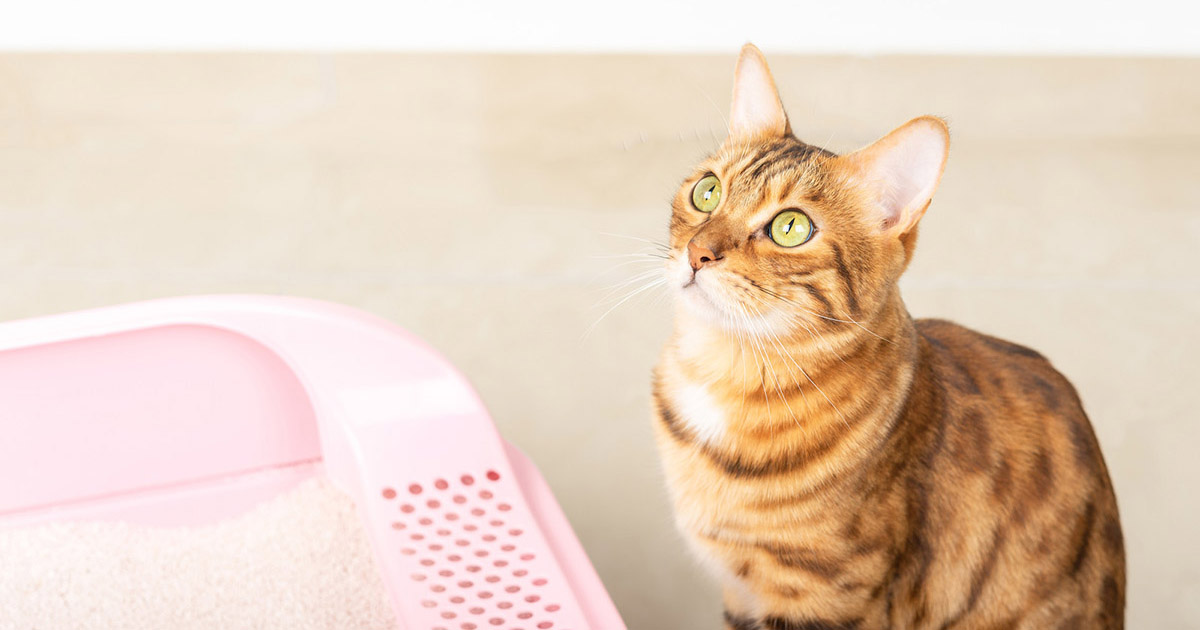Uncovering Why Animal Waste Must Not Be Flushed Down the Toilet
Uncovering Why Animal Waste Must Not Be Flushed Down the Toilet
Blog Article
We've found this article involving Should you flush animal waste down the toilet directly below on the web and figured it made good sense to discuss it with you on my blog.

When it concerns dealing with waste, specifically animal waste, many individuals commonly turn to the hassle-free option of flushing it down the commode. However, this seemingly easy solution can have significant repercussions for the setting and public health. In this post, we'll explore why flushing pet waste down the bathroom is a bad concept and supply alternative techniques for correct disposal.
Intro
Correct waste disposal is critical for keeping ecological sustainability and public health. While it may appear safe to flush animal waste down the commode, it can bring about various concerns, both for the setting and human wellness.
Threats of flushing animal waste
Environmental effect
Purging pet waste introduces dangerous bacteria and pathogens right into waterways, which can adversely affect water ecological communities. These virus can pollute water resources and injury marine life, disrupting fragile environments.
Public health worries
Pet waste has dangerous germs such as E. coli and Salmonella, which can position significant health dangers to human beings. Purging pet waste down the bathroom can contaminate water products, resulting in the spread of diseases and infections.
Alternatives to flushing
Rather than purging pet waste down the toilet, there are a number of different disposal methods that are more eco-friendly and hygienic.
Composting
Composting pet waste is a green method to throw away it. By composting, organic matter is broken down right into nutrient-rich dirt, which can be made use of to feed yards and plants.
Garbage dump disposal
Disposing of pet waste in a landfill is another option. While not as environmentally friendly as composting, it is a safer choice to flushing, as it stops the contamination of water sources.
Pet garbage disposal systems
There are specific animal garbage disposal systems readily available that securely and hygienically throw away pet waste. These systems frequently use enzymes to break down waste and remove smells.
Actions to appropriate pet waste disposal
To guarantee proper disposal of animal waste, adhere to these actions:
Scooping and getting waste
Frequently scoop and bag animal waste using naturally degradable bags. This prevents waste from infecting the atmosphere.
Using designated waste bins
Dispose of bagged pet waste in designated waste bins, such as compost bins or land fill containers. Prevent flushing it down the bathroom in any way costs.
Cleansing can and pet dog areas frequently
On a regular basis tidy litter boxes and pet areas to prevent the build-up of waste and germs. Use pet-safe cleaning products to preserve hygiene.
Advantages of proper disposal techniques
Taking on proper disposal approaches for animal waste offers several advantages:
Lowered environmental pollution
Correct disposal methods minimize the danger of environmental pollution, safeguarding waterways and communities from contamination
Lessened risk of water contamination.
By preventing flushing pet waste down the bathroom, the danger of water contamination is significantly minimized, protecting public health.
Enhanced sanitation and hygiene
Proper disposal approaches promote much better sanitation and health, developing a safer setting for both people and animals.
Verdict
In conclusion, purging animal waste down the toilet is hazardous to the environment and public health. By embracing different disposal methods and adhering to proper waste monitoring practices, we can decrease the adverse effect of pet waste and contribute to a cleaner, much healthier planet.
What To Do With Dog Poo – The Do's And Don'ts Of Disposing Of Faeces
Dog poo bins
Some councils provide dedicated dog waste bins in popular dog-walking areas that can take dog poo that has been bagged but you can legally dispose of dog waste in any public litter bin, as long as it is securely bagged. This also applies to your wheelie bin at home.
Do not flush
Water companies do not recommend flushing dog faeces down the toilet because certain parasites can survive the water processing treatment and are potentially harmful to humans. You should also never consider flushing dog poo that has been bagged down the toilet as the bags will not break down and instead create severe blockages in the sewage system.
In the woods
The Forestry Commission promotes a ‘stick and flick’ method for dealing with waste in the woods. This means finding a stick and using it to flick any poo from off the path so that it is out of the way of other walkers. You could also bury it as long as it is not in an area where there might be livestock.
Livestock
Parasites found in dog poo can be transmitted to livestock if they inadvertently eat infected faeces that has been left on grazing land. This could result in the death of sheep or abortion in cattle so you should always make sure you pick up your dog’s waste in fields where livestock could be present.

On a regular basis tidy litter boxes and pet areas to prevent the build-up of waste and germs. Use pet-safe cleaning products to preserve hygiene.
Advantages of proper disposal techniques
Taking on proper disposal approaches for animal waste offers several advantages:
Lowered environmental pollution
Correct disposal methods minimize the danger of environmental pollution, safeguarding waterways and communities from contamination
Lessened risk of water contamination.
By preventing flushing pet waste down the bathroom, the danger of water contamination is significantly minimized, protecting public health.
Enhanced sanitation and hygiene
Proper disposal approaches promote much better sanitation and health, developing a safer setting for both people and animals.
Verdict
In conclusion, purging animal waste down the toilet is hazardous to the environment and public health. By embracing different disposal methods and adhering to proper waste monitoring practices, we can decrease the adverse effect of pet waste and contribute to a cleaner, much healthier planet.
What To Do With Dog Poo – The Do's And Don'ts Of Disposing Of Faeces
Dog poo bins
Some councils provide dedicated dog waste bins in popular dog-walking areas that can take dog poo that has been bagged but you can legally dispose of dog waste in any public litter bin, as long as it is securely bagged. This also applies to your wheelie bin at home.
Do not flush
Water companies do not recommend flushing dog faeces down the toilet because certain parasites can survive the water processing treatment and are potentially harmful to humans. You should also never consider flushing dog poo that has been bagged down the toilet as the bags will not break down and instead create severe blockages in the sewage system.
In the woods
The Forestry Commission promotes a ‘stick and flick’ method for dealing with waste in the woods. This means finding a stick and using it to flick any poo from off the path so that it is out of the way of other walkers. You could also bury it as long as it is not in an area where there might be livestock.
Livestock
Parasites found in dog poo can be transmitted to livestock if they inadvertently eat infected faeces that has been left on grazing land. This could result in the death of sheep or abortion in cattle so you should always make sure you pick up your dog’s waste in fields where livestock could be present.

I was made aware of that article about Don't Flush Your Pets Poo Down The Loo, Vet Warns from a good friend on our other website. Sharing is caring. Helping others is fun. We treasure your readership.
Call Today Report this page